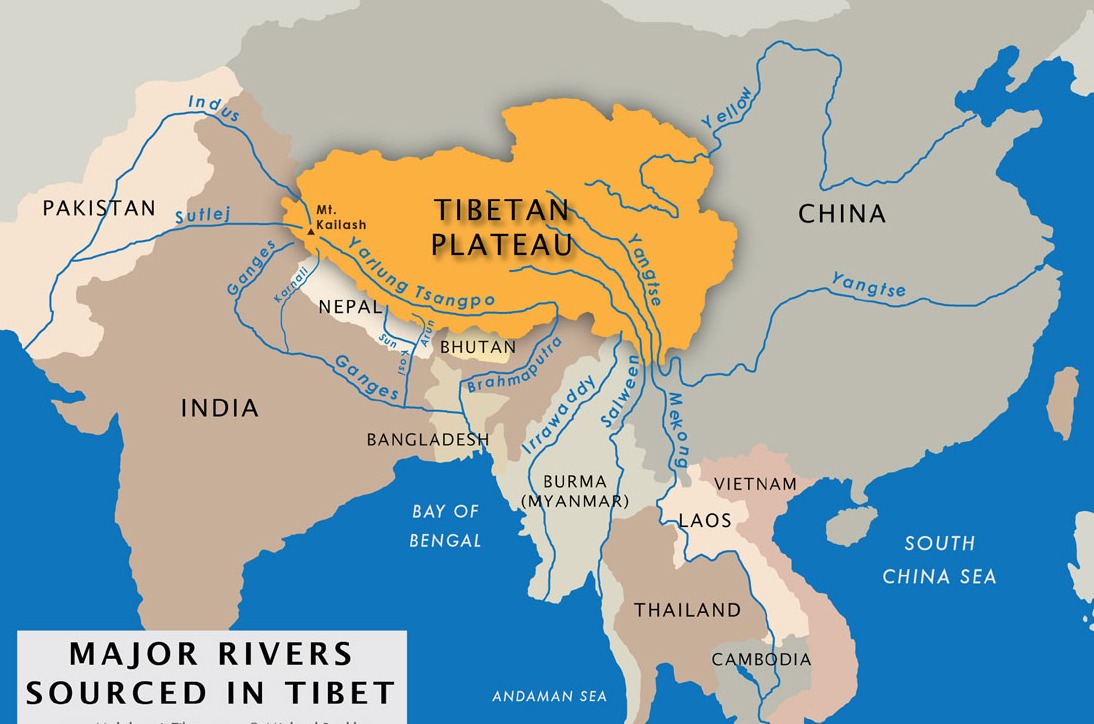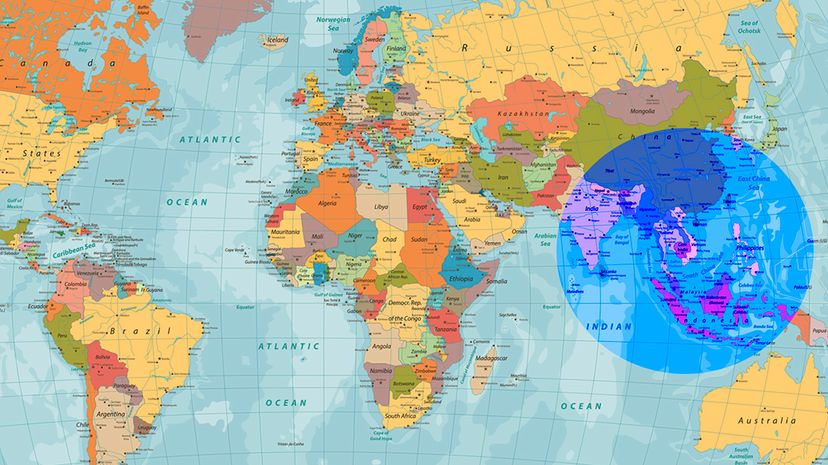Fewer Than 100 Companies Are Warming the Planet — And the Himalayas Are Paying the Price
Introduction: A Global Crisis With a Concentrated Source
The climate crisis feels like a collective burden — and it is. But not equally. A landmark 2017 study by the Carbon Majors Database revealed a striking truth: just 100 companies are responsible for over 70% of global industrial greenhouse gas emissions since 1988.
This changes everything. Climate change is not the diffuse result of billions of personal choices — it's overwhelmingly driven by the business models of a few fossil fuel giants, utilities, and state-owned entities. While their profits soar, the most fragile ecosystems — especially the Himalayas — bear the brunt of their emissions. And the stakes couldn't be higher: the Himalayas are the water tower of Asia, feeding rivers that serve over 2 billion people.
The Carbon Majors: Who’s Really Responsible?
According to data compiled by the Climate Accountability Institute, the following companies are among the top emitters responsible for cumulative emissions since 1988:
🔥 Top Private Fossil Fuel Companies:
-
Chevron
-
ExxonMobil
-
BP
-
Shell
-
TotalEnergies
-
ConocoPhillips
-
Peabody Energy
-
Lukoil
-
Arch Resources
-
Repsol
🏭 Top State-Owned Fossil Fuel Entities:
-
Saudi Aramco (Saudi Arabia)
-
Gazprom (Russia)
-
National Iranian Oil Co.
-
Coal India
-
Pemex (Mexico)
-
CNPC (China)
-
Petrobras (Brazil)
-
Kuwait Petroleum Corp.
-
Petronas (Malaysia)
-
Sonatrach (Algeria)
The remaining dozens are other national oil and gas firms, cement producers, coal miners, and electricity generators — almost all concentrated in fossil-intensive industries.
📌 The Takeaway:
-
These companies knew the risks of climate change for decades.
-
Many actively lobbied against climate science and policy.
-
They continue to expand oil, gas, and coal operations even now.
The Himalayas: Ground Zero for Climate Impact
Nowhere is this negligence more devastating than the Himalayan region — home to the world’s third-largest ice mass after Antarctica and the Arctic.
Why Are the Himalayas So Vulnerable?
-
Warming Twice as Fast: The Himalayas are heating up twice as fast as the global average.
-
Glacier Melting: Over 30% of Himalayan glaciers are set to disappear by 2100 even if warming is kept under 1.5°C.
-
Risk of Glacial Lake Outburst Floods (GLOFs): Melting glaciers form unstable lakes that can burst, flooding valleys and destroying entire villages.
-
Disrupted Monsoon Patterns: Warming alters rainfall, threatening both agriculture and water supply.
Why It Matters: The Himalayas Feed the World
The Himalayas aren't just majestic peaks — they are the lifeblood of Asia.
🌊 The Himalayan Watershed:
-
Feeds 10 major rivers: Ganges, Indus, Brahmaputra, Mekong, Yangtze, Yellow River, Salween, Sutlej, Amu Darya, and Karnali.
-
Provides water to 2 billion+ people across India, China, Nepal, Pakistan, Bangladesh, Bhutan, Myanmar, and beyond.
-
Powers hydroelectricity for dozens of cities.
-
Supports irrigation systems, drinking water, and sanitation.
If the glaciers vanish, these rivers may become seasonal or intermittent, leading to:
-
Droughts and famine
-
Mass migrations
-
Water wars between nations
Climate Justice: The Global North Profits, the Global South Pays
Many of the carbon majors are based in or serve wealthier nations. But their emissions devastate developing countries that contributed the least to the crisis:
-
Nepal, Bhutan, and northern India have minimal historical emissions.
-
Yet they face floods, landslides, droughts, and economic disruption.
-
These countries lack the resources for large-scale mitigation and adaptation.
This is a textbook case of climate injustice — one where the polluters are not the sufferers, and the sufferers never gave their consent.
Big Oil vs. the Himalayas: A Moral Reckoning
If Shell or Chevron drills another well, a glacier in Ladakh retreats.
If Aramco expands oil output, a village in Uttarakhand faces flood risk.
If Coal India ramps up production, Kathmandu chokes with toxic air.
There is no ethical justification left for continued fossil fuel expansion, especially when renewable alternatives are now cheaper, faster, and cleaner.
Call to Action: Averting a Himalayan Catastrophe
1. Hold the Carbon Majors Accountable
-
Climate litigation is rising. These companies must pay reparations for the damage they've caused.
-
Carbon taxes and liability frameworks must be globalized, not just national.
2. Protect Himalayan Ecosystems
-
Ban or heavily regulate high-altitude development.
-
Invest in early warning systems for floods and landslides.
-
Promote community-led adaptation efforts.
3. Push for Global Emissions Justice
-
The Global North must fund loss and damage mechanisms.
-
Phase out fossil subsidies and redirect funds to clean energy for the Global South.
-
Recognize water security as a geopolitical issue, not just environmental.
Conclusion: The Ice Is Melting — And So Is Time
Less than 100 companies — through willful negligence and profiteering — have put the future of billions at risk. Their emissions are eroding the Himalayas, river by river, glacier by glacier.
The fight for the Himalayas is not just about mountains. It’s about human dignity, justice, and survival. If we can’t stop a few dozen companies from destroying the planet’s most vital water source, then what exactly is civilization worth?
The time for polite negotiation is over. It’s time to name names, assign responsibility, and act — for the Himalayas, and for the billions who depend on their snow-fed grace.
100 से भी कम कंपनियां दुनिया को गर्म कर रही हैं — और हिमालय इसकी सबसे बड़ी कीमत चुका रहा है
भूमिका: एक वैश्विक संकट जिसकी जड़ें सीमित हैं
जलवायु संकट अक्सर एक साझा बोझ की तरह महसूस होता है — और है भी। लेकिन यह बोझ सभी पर समान रूप से नहीं पड़ता। Carbon Majors Database द्वारा 2017 में प्रकाशित एक ऐतिहासिक अध्ययन ने चौंकाने वाला तथ्य उजागर किया: सिर्फ 100 कंपनियां 1988 से अब तक के 70% औद्योगिक ग्रीनहाउस गैस उत्सर्जन के लिए जिम्मेदार हैं।
इससे हमारी सोच की दिशा बदल जाती है। जलवायु परिवर्तन मुख्य रूप से अरबों लोगों की व्यक्तिगत गतिविधियों का परिणाम नहीं, बल्कि कुछ ही बहुराष्ट्रीय कंपनियों और राज्य-स्वामित्व वाली संस्थाओं के व्यापार मॉडल का नतीजा है। उनके मुनाफे आसमान छू रहे हैं, जबकि सबसे नाजुक पारिस्थितिक तंत्र — खासकर हिमालय — सबसे ज़्यादा प्रभावित हो रहे हैं। और यह केवल एक क्षेत्रीय आपदा नहीं, बल्कि 2 अरब से अधिक लोगों की जल आपूर्ति के लिए एक अस्तित्व का संकट है।
वे कौन सी कंपनियां हैं जो सबसे ज़्यादा जिम्मेदार हैं?
Climate Accountability Institute के आंकड़ों के अनुसार, निम्नलिखित कंपनियां 1988 से अब तक के सबसे बड़े कार्बन उत्सर्जक हैं:
🔥 शीर्ष निजी तेल-गैस और कोयला कंपनियां:
-
शेवरॉन (Chevron)
-
एक्सॉनमोबिल (ExxonMobil)
-
बीपी (BP)
-
शेल (Shell)
-
टोटलएनर्जीज़ (TotalEnergies)
-
कोनोकोफिलिप्स (ConocoPhillips)
-
पीबॉडी एनर्जी (Peabody Energy)
-
लुकोइल (Lukoil)
-
आर्च रिसोर्सेज़ (Arch Resources)
-
रेपसोल (Repsol)
🏭 प्रमुख राज्य-स्वामित्व वाली जीवाश्म ईंधन कंपनियां:
-
सऊदी अरामको (Saudi Aramco) — सऊदी अरब
-
गैज़प्रोम (Gazprom) — रूस
-
नेशनल ईरानियन ऑयल कंपनी
-
कोल इंडिया (Coal India)
-
पेमेक्स (Pemex) — मैक्सिको
-
सीएनपीसी (CNPC) — चीन
-
पेट्रोब्रास (Petrobras) — ब्राज़ील
-
कुवैत पेट्रोलियम कॉर्पोरेशन
-
पेट्रोनास (Petronas) — मलेशिया
-
सोनात्राच (Sonatrach) — अल्जीरिया
बाक़ी दर्जनों कंपनियां अन्य राष्ट्रीय तेल-गैस निगम, सीमेंट निर्माता, कोयला खनिक और विद्युत संयंत्र हैं।
हिमालय: जलवायु परिवर्तन का सबसे नाज़ुक मोर्चा
हिमालय दुनिया की तीसरी सबसे बड़ी बर्फ़ीली संरचना है — अंटार्कटिका और आर्कटिक के बाद। लेकिन अब यह तेज़ी से पिघल रही है।
हिमालय इतना संवेदनशील क्यों है?
-
दोगुनी गति से गर्म हो रहा है — वैश्विक औसत की तुलना में दोगुनी तेज़ी से।
-
हिमनद (ग्लेशियर) पिघल रहे हैं — अनुमान है कि अगर ग्लोबल वार्मिंग 1.5°C पर भी सीमित रही, तब भी 30% हिमालयी ग्लेशियर 2100 तक गायब हो जाएंगे।
-
ग्लेशियर झील फटने का खतरा — बर्फ पिघलकर अस्थिर झीलें बनाती हैं जो कभी भी फट सकती हैं।
-
मानसून का असंतुलन — बारिश के पैटर्न बदलने से कृषि, जल आपूर्ति और पारिस्थितिक संतुलन प्रभावित होता है।
यह क्यों महत्वपूर्ण है: हिमालय पूरे एशिया को जल देता है
हिमालय सिर्फ पहाड़ नहीं हैं — वे एशिया की जल-टंकी हैं।
🌊 हिमालयी जल स्रोत:
-
10 प्रमुख नदियों को जन्म देते हैं: गंगा, ब्रह्मपुत्र, सिंधु, यांग्त्ज़े, येलो रिवर, मेकोंग, सतलुज, कर्णाली, सालवीन, अमू दर्या।
-
2 अरब से अधिक लोगों की जल आवश्यकताएं पूरी करते हैं — भारत, नेपाल, चीन, बांग्लादेश, पाकिस्तान, भूटान, म्यांमार आदि में।
-
बिजली उत्पादन, सिंचाई, पीने का पानी — सब कुछ इन्हीं नदियों पर निर्भर है।
अगर हिमालय के ग्लेशियर समाप्त हो गए, तो:
-
नदियाँ मौसमी या अस्थिर हो जाएंगी
-
सूखा, अकाल और पलायन बढ़ेगा
-
जल युद्ध तक की स्थिति बन सकती है
जलवायु न्याय: प्रदूषण कहीं और, पीड़ा कहीं और
इन कंपनियों में से अधिकांश का मुख्यालय या बाजार विकसित देशों में है। लेकिन उनका उत्सर्जन सबसे ज़्यादा ग़रीब और विकासशील देशों को प्रभावित करता है:
-
नेपाल, भूटान, उत्तर भारत जैसे क्षेत्र इतिहासिक रूप से कम उत्सर्जक रहे हैं
-
लेकिन उन्हें भुगतना पड़ रहा है भूस्खलन, बाढ़, और कृषि संकट
-
इनके पास पर्याप्त संसाधन भी नहीं हैं कि वे बड़े पैमाने पर अनुकूलन या रोकथाम कर सकें
यह climate injustice का जीवंत उदाहरण है — जो नुकसान झेल रहे हैं, उन्होंने यह कभी पैदा नहीं किया।
बिग ऑयल बनाम हिमालय: एक नैतिक सवाल
-
अगर शेल या शेवरॉन एक और कुआं खोदते हैं, तो लद्दाख का ग्लेशियर और पीछे हटता है।
-
अगर अरामको तेल उत्पादन बढ़ाता है, तो उत्तराखंड में बाढ़ का ख़तरा बढ़ता है।
-
अगर कोल इंडिया कोयला खनन तेज़ करती है, तो काठमांडू में दम घुटता है।
अब और विस्तार की कोई नैतिक या आर्थिक औचित्य नहीं है, जब सौर और पवन ऊर्जा अब सस्ती और सुलभ हो चुकी है।
समाधान: हिमालय को बचाने के लिए हमें क्या करना चाहिए?
1. कार्बन उत्सर्जक कंपनियों को जवाबदेह ठहराएं
-
इन पर जलवायु हानि के लिए मुकदमे चलें
-
वैश्विक स्तर पर कार्बन टैक्स और उत्तरदायित्व सुनिश्चित किया जाए
2. हिमालयी पारिस्थितिकी की रक्षा करें
-
उच्च पर्वतीय इलाकों में अनियंत्रित विकास पर रोक लगे
-
भविष्यवाणी तंत्र और आपदा चेतावनी में निवेश हो
-
स्थानीय समुदायों को अनुकूलन में सशक्त किया जाए
3. वैश्विक उत्सर्जन न्याय को प्राथमिकता दें
-
विकसित देशों को "हानि और क्षति" फंडिंग देनी होगी
-
जैव ईंधन पर सब्सिडी बंद करके पैसा हरित ऊर्जा में लगाया जाए
-
जल सुरक्षा को राष्ट्रीय नहीं, अंतरराष्ट्रीय मुद्दा माना जाए
निष्कर्ष: बर्फ पिघल रही है — और समय भी
सिर्फ 100 से भी कम कंपनियां — अपने मुनाफे की लालच में — 2 अरब से अधिक लोगों का भविष्य खतरे में डाल रही हैं। उनके कार्बन उत्सर्जन हिमालय को तेज़ी से नष्ट कर रहे हैं।
हिमालय की रक्षा केवल पहाड़ों की रक्षा नहीं है — यह मानवता, न्याय और अस्तित्व की रक्षा है।
अगर हम इन कंपनियों को रोक नहीं सके, तो फिर हमें सभ्यता कहने का कोई हक नहीं।
अब समय है — नाम लेने का, जिम्मेदारी तय करने का, और कठोर कार्रवाई करने का।
हिमालय के लिए, और उन अरबों के लिए जो उसके पिघलते आशीर्वाद पर जीवित हैं।



No comments:
Post a Comment